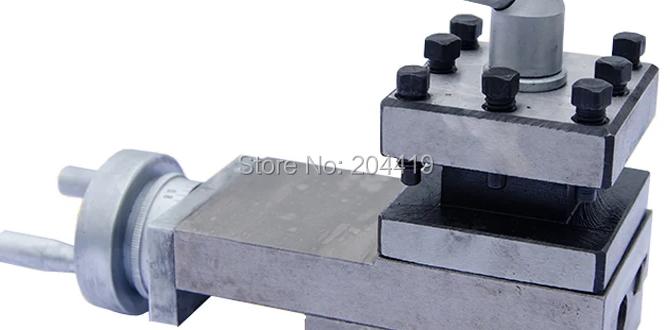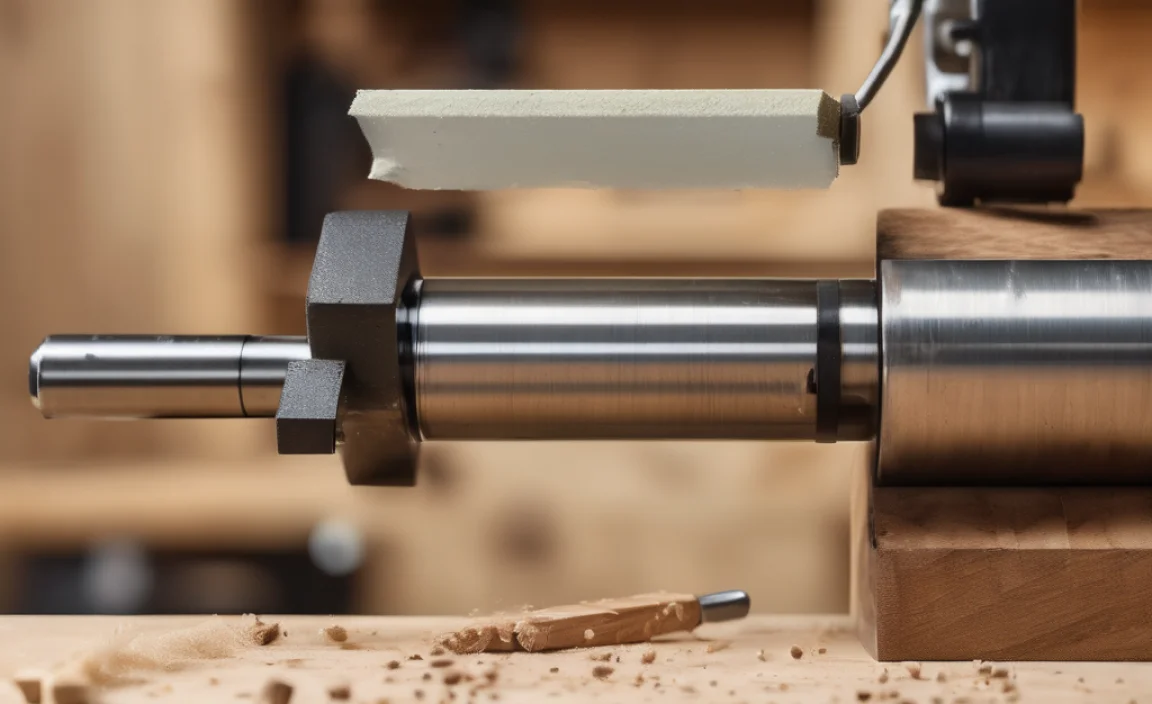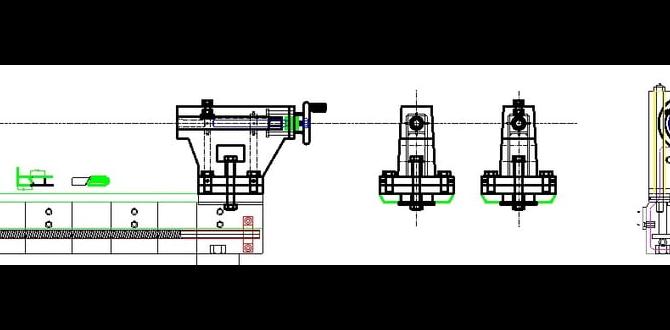Quick Summary
Achieving the perfect 1/4 inch thread mill speeds for Delrin is straightforward with the right approach. This guide provides proven, beginner-friendly settings to cut clean, precise threads in Delrin plastics, ensuring your projects run smoothly and efficiently. Let’s get those threads dialed in!
Mastering Your 1/4 Inch Thread Mill: Essential Delrin Speeds for Beginners
Hey everyone, Daniel Bates here from Lathe Hub! Ever been a bit hesitant to thread mill Delrin? Maybe the idea of plastic and those tiny cutting edges feels a little… slippery? You’re not alone. Getting the right speeds and feeds for plastics like Delrin can seem tricky, especially when you’re just starting out with your metal lathe or milling machine. The wrong settings can lead to melted plastic, broken tools, and a lot of frustration. But don’t worry! Today, we’re going to break down exactly what you need to know to confidently cut clean, sharp threads in Delrin using a 1/4 inch thread mill. We’ll cover the best speeds, feeds, and a few handy tips to make sure your Delrin threading projects are a resounding success. Ready to get those perfect threads?
Why Delrin Threading Can Seem Tricky (And How to Fix It!)
Delrin, also known as Acetal or POM, is a fantastic engineering plastic. It’s strong, has low friction, and machines beautifully. However, it also has a low melting point. If you run your tools too fast or feed too aggressively, the heat generated from friction can melt the plastic, causing it to gum up on your cutter and create rough, imprecise threads. It’s like trying to carve ice cream with a hot knife – not ideal!
The key to successful Delrin threading lies in managing that heat. This means finding the sweet spot for your spindle speed (RPM) and your feed rate. We want to remove material efficiently without creating excessive friction and melting. Fortunately, with a little guidance, you can find these settings easily. We’ll dive into the specifics, so you can stop guessing and start cutting with confidence.
Understanding Thread Milling Basics
Before we get to the numbers, let’s quickly recap what a thread mill does. Unlike a die that cuts threads from the outside or a tap that cuts them from the inside, a thread mill is essentially a multi-point milling cutter. It moves in a helical path around the hole to cut the threads. This offers a lot of flexibility, especially for larger or blind holes.
For a 1/4 inch thread to be effective, you need the right combination of cutter, speed, and feed. A general-purpose 1/4 inch thread mill will typically have a diameter suitable for cutting the major diameter of the thread (the widest part).
Key Factors for Delrin Thread Milling
Several factors influence your Delrin threading success. Let’s look at the most important ones for a beginner:
Material: Delrin (Acetal/POM) – We know this! It’s somewhat prone to melting, so we need to be mindful of heat.
Tool: 1/4 Inch Thread Mill – We’ll assume you’re using a standard 1/4 inch thread mill. The number of flutes on your thread mill matters. More flutes mean more engagement with the material simultaneously, which can increase heat. For Delrin, a 2-flute or 3-flute thread mill is often preferred to manage heat.
Hole Size: The pre-drilled hole size is crucial for thread quality. For a 1/4 inch thread, you need to drill the correct pilot hole size. We’ll cover this in detail.
Coolant/Lubrication: While Delrin doesn’t strictly require coolant like metals, a light mist of air or a plastic-specific cutting fluid can help immensely with chip evacuation and heat management. Avoid excessive liquid coolants that can create a mess with plastics.
Machine Rigidity: A stable machine is always best. Wobbly machines can lead to chatter and poor thread finish.
The Magic Numbers: Proven 1/4 Inch Thread Mill Speeds and Feeds for Delrin
So, let’s get to the heart of it: the speeds and feeds you need for a 1/4 inch thread mill in Delrin. These recommendations are based on common practice and aim to provide a good balance of speed, finish, and tool life.
Remember, these are starting points. Your specific machine, thread mill coating, and Delrin grade might require minor adjustments.
Surface Speed and RPM Calculation
The fundamental concept is Surface Speed (SFM – Surface Feet per Minute). This is the speed at which the cutting edge of your tool moves across the material’s surface. Tooling manufacturers often provide recommended SFM ranges for various materials.
For Delrin, a good starting SFM range is usually between 150 to 300 SFM. Let’s aim for the middle ground as a solid starting point.
The formula to convert SFM to RPM (Revolutions Per Minute) for your machine is:
RPM = (SFM × 12) / πD
Where:
SFM = Surface Feet per Minute (e.g., 200 SFM)
12 = inches per foot
π (Pi) = approximately 3.14159
D = Diameter of the cutter in inches (this is your 1/4 inch thread mill diameter, which is usually slightly under 0.25″ if measured at the effective cutting diameter, or often simplified using the nominal thread mill size). For simplicity, we’ll use 0.25″.
Let’s calculate for 200 SFM with a 0.25-inch diameter thread mill:
RPM = (200 × 12) / (3.14159 × 0.25)
RPM = 2400 / 0.7854
RPM ≈ 3056
This is a theoretical calculation. In practice, for plastics, you often run them a bit slower to manage heat. A more conservative and often more effective approach for Delrin, especially for beginners, is to aim for a lower RPM.
Given Delrin’s characteristics, a common and very effective RPM range for a 1/4 inch thread mill is 1000 to 2000 RPM.
Feed Rate: How Fast to Move the Tool
Feed rate is how fast the cutter moves along the helical path. This is usually expressed in inches per minute (IPM) or sometimes in revolutions (e.g., inches per revolution). Thread mills are often programmed with an axial feed rate (how fast it moves into the part) and a radial feed rate (how fast it moves sideways in its helical path).
For thread milling, the key is the chip load – the amount of material each cutting edge takes off per revolution. A good chip load for Delrin with a standard carbide thread mill is typically quite small, around 0.001″ to 0.003″ per tooth.
Let’s use a 2-flute thread mill as an example.
Feed Rate (IPM) = Chip Load per Tooth × Number of Flutes × Spindle Speed (RPM)
Using our target RPM of 1500 RPM and a chip load of 0.002″ per tooth for a 2-flute thread mill:
Feed Rate = 0.002″ × 2 × 1500 RPM
Feed Rate = 0.004 × 1500
Feed Rate = 6 IPM
This axial feed rate is the speed at which the tool moves down into the part as it mills the thread.
Recommended Settings Table for 1/4 Inch Thread Mill in Delrin
Here’s a table summarizing recommended starting points for a 1/4 inch thread mill in Delrin. These are for standard 2-flute or 3-flute carbide thread mills.
| Parameter | Recommended Value (Delrin) | Notes |
| :——————– | :——————————————————- | :———————————————————————————————————— |
| Material | Delrin (Acetal/POM) | Low friction, but low melting point. |
| Thread Mill Size | 1/4 Inch | Standard pitch (e.g., 20 TPI for 1/4-20 UNC) |
| Flute Count | 2 or 3 | Lower flute count helps manage heat. |
| Cutting Tool | Carbide (Uncoated or TiN coated) | Carbide offers good heat resistance. |
| Spindle Speed (RPM) | 1000 – 2000 RPM | Start lower (e.g., 1200 RPM) and increase if finish is good and no melting. |
| Chip Load/Tooth | 0.001″ – 0.003″ | Start conservatively (e.g., 0.0015″). Adjust based on chip formation and finish. |
| Axial Feed Rate (IPM) | 3 – 12 IPM (Calculated based on RPM & chip load). | For 1500 RPM, 2 flutes, 0.002″ chip load: ~6 IPM. For 2000 RPM, 3 flutes, 0.003″ chip load: ~18 IPM (watch heat!) |
| Climb Milling | Recommended | Generally provides a better finish on plastics. Check your machine’s capabilities. |
| Coolant/Lubrication | Light Air Blast or Plastic-Specific Lubricant | Essential for chip evacuation and heat reduction. Avoid floods of coolant. |
| Depth of Cut (Radial) | Typically 0.010″ – 0.020″ per pass | This is usually set by the CAM software or controller. |
Important Considerations for Feed Rate
The Axial Feed Rate is the linear movement of the tool down the Z-axis as it follows the helical path. The calculated IPM is the primary feed rate you’ll input. Your machine’s controller will use this combined with the helical path to create the thread.
Climb Milling vs. Conventional Milling: For plastics, climb milling is usually preferred. In climb milling, the cutter rotates in the same direction as the material is fed. This “cuts into” the chip rather than dragging, generally resulting in a cleaner finish and less stress on the tool. Ensure your machine can handle climb milling and that you program it correctly.
Drill Size for 1/4 Inch Threads
Before you can thread mill, you need a pilot hole. The size of this hole dictates the thread’s major diameter and strength. For a 1/4 inch thread, you need to know the desired thread standard (e.g., 1/4-20 UNC, 1/4-28 UNF).
1/4-20 UNC (Unified National Coarse):
Tap Drill Size: #7 drill bit (0.201 inches) or a 5.2mm drill bit. This provides approximately 75% thread engagement.
For Delrin, you might consider a slightly larger drill to ease the cutting load and avoid excessive heat. A U.S.S. #7 (0.201″), #23 (.213″), or even a common increment like 7/32″ (0.21875″) can work well for 75-85% thread. A larger hole results in less material to cut, reducing heat, but also less thread strength. For most non-structural applications in Delrin, this is perfectly acceptable and often preferred.
1/4-28 UNF (Unified National Fine):
Tap Drill Size: #1 drill bit (0.228 inches) or a 5.8mm drill bit.
Again, for Delrin, you might slightly oversize. A #1 (.228″), #0 (.234″), or a common increment like 15/64″ (0.234375″) to 1/4″ (0.250″) could be used for 75-85% thread.
General Rule for Delrin: For a given thread standard, using a drill bit a few thousandths of an inch larger than the standard tap drill size is often beneficial for plastics. It reduces the amount of material the thread mill has to remove, generating less heat and leading to a cleaner cut.
Setting Up Your Machine
1. Secure the Delrin: Make sure your Delrin workpiece is firmly held in your chuck, vise, or fixture.
2. Install Thread Mill: Securely install your 1/4 inch thread mill into your collet or tool holder.
3. Set Z-Zero: Carefully set your Z-zero point. This is typically on the top surface of the workpiece.
4. Program or Manually Enter Speeds and Feeds: Input the calculated RPM and IPM into your machine’s controller. For manual machines, set the spindle speed and engage the feed.
5. Engage Coolant/Air: Turn on your air blast or lubricant.
6. Execute the Program: Run your thread milling operation.
Pro Tip: Always start with the lower end of the recommended RPM and feed rate, especially if you’re unsure. Observe the process: listen for chatter, watch for melting plastic, and inspect the chips. If everything looks good, you can incrementally increase the speed and feed to find the optimal balance for your setup.
Step-by-Step Guide: Thread Milling 1/4 Inch Threads in Delrin
Let’s walk through a typical scenario. Suppose you need to cut a 1/4-20 UNC thread in a block of Delrin.
Tools and Materials Needed:
Delrin workpiece
Metal lathe or milling machine
Drill bits (e.g., a #7 drill and a slightly larger one like 7/32″ or 0.215″)
1/4 inch thread mill (2 or 3 flute carbide, suitable for plastics)
Collet or tool holder for the thread mill
Measuring tools (calipers, ruler)
Safety glasses and appropriate PPE
Air blast system or plastic-specific cutting fluid
Steps:
1. Drill the Pilot Hole:
Based on our discussion, for a 1/4-20 UNC thread in Delrin, let’s choose a 7/32″ (0.21875″) drill bit. This provides about 80% thread engagement – a good compromise for strength and ease of cutting in plastic.
Drill a clean, perpendicular hole to the desired thread depth. Ensure the hole is deep enough for the full thread engagement plus a little clearance at the bottom if it’s a blind hole.
2. Set Up Your Machine:
Secure your Delrin workpiece in your milling machine vise or lathe chuck.
Install the 1/4 inch thread mill into your spindle collet or holder.
Set your Z-axis zero on the top surface of the Delrin.
3. Determine Speeds and Feeds:
Let’s aim for:
Spindle Speed: 1500 RPM
Chip Load per Tooth: 0.002 inches
Number of Flutes: 2
Axial Feed Rate (IPM): 0.002″ × 2 flutes × 1500 RPM = 6 IPM
4. Program or Set Machine Parameters:
Input 1500 RPM into your spindle speed setting.
Input 6 IPM as your axial feed rate.
Ensure your control is set for climb milling if possible.
Set the radial depth of cut per pass (e.g., 0.015″).
5. Activate Lubrication:
Turn on your air blast or apply a light mist of your chosen plastic lubricant.
6. Run the Thread Milling Cycle:
If using a CNC, initiate the program. If using a manual machine, carefully engage the feed as the spindle reaches speed.
For Manual Machines:
Bring the thread mill to the edge of the hole.
Start the spindle and engage the feed to begin the helical path.
Guide the machine at the calculated feed rate.
Watch for any signs of melting or chatter. Stop and adjust settings if necessary (slower feed or RPM, or more air blast).
When the thread is fully milled to the correct depth and diameter, disengage the feed and retract the tool.
7. Inspect Your Threads:
Once the cycle is complete, carefully remove the thread mill.
Visually inspect the threads for a clean finish, sharp crests, and well-formed roots.
Check for any signs of melted plastic on the workpiece or tool.
If possible, test the thread with a mating bolt or screw. It should thread in smoothly.
Troubleshooting:
Melted Plastic/Gummy Chips: Reduce RPM, reduce feed rate, or increase air blast.
Chatter or Rough Finish: Ensure the workpiece is rigid, your tool is sharp, and you’re not feeding too fast. Consider slightly slower RPM or a finer chip load.
* Threads Too Loose/Tight: Double-check your pilot hole size and ensure your thread mill and machine are accurately set up.
Advanced Tips for Better Delrin Results
Once you’re comfortable with the basics, here








